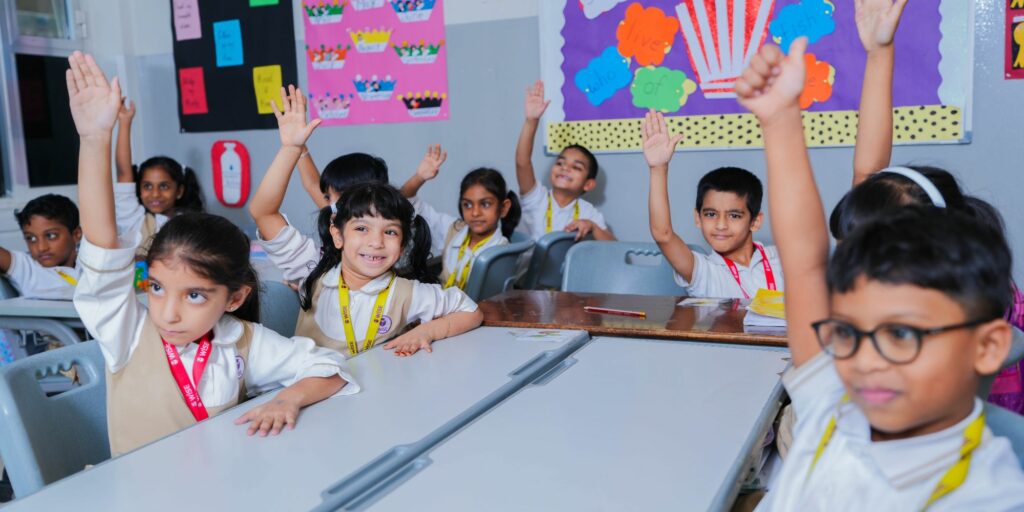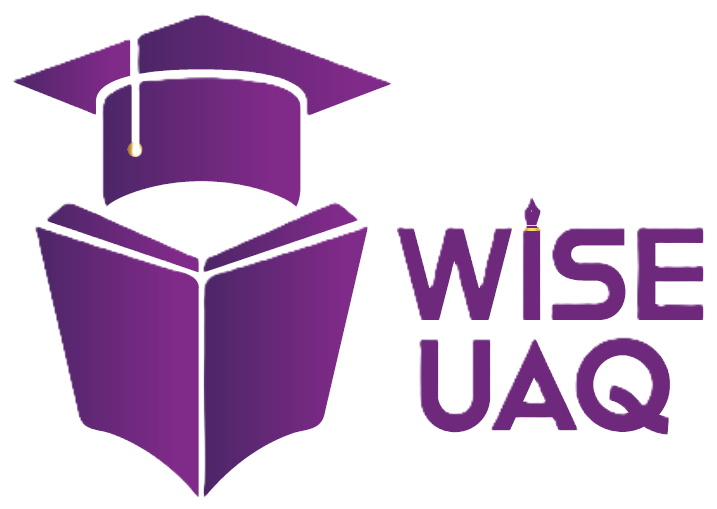We proudly follow the CBSE curriculum
It is important to ensure that everyone within the school is clear about what they are aiming to achieve through the curriculum, which is the totality of a child’s experiences.
The curriculum provided by WISE Indian Private School is guided by CBSE syllabus which is based on National Curriculum Framework-2005 and seeks to provide opportunities for students to achieve excellence in learning.
Our rigorous, well planned curriculum combined with high quality teaching ensures that children are supported to be well rounded, empathetic young people who have a genuine thirst for learning. Children develop a strong sense of moral purpose in addition to a respect for and understanding of people.


The Curriculum aims to:
- Achieve cognitive, affective and psychomotor excellence;
- Enhance self-awareness and explore innate potential;
- Promote Life Skills, goal setting, and lifelong learning;
- Inculcate values and foster cultural learning and international understanding in an interdependent society;
- Acquire the ability to utilize technology and information for the betterment of humankind;
- Strengthen knowledge and attitude related to livelihood skills;
- Develop the ability to appreciate art and showcase talents;
- Promote physical fitness, health and well-being.
- Promote arts integrated learning.

Curriculum Areas
The School Curriculum acknowledges the fact that subjects like language, Mathematics, Science and social science help the cognitive development of the child and, therefore, require a greater academic emphasis. Further, CBSE also envisions the all-round development of students in consonance with the holistic approach to education and therefore, emphasizes integration of co-curricular domains with curricular activities in an equitable manner.
In operational sense, the school curriculum is learner-centered with school being a place where students would be acquiring various skills; building self-concept, sense of enterprise, aesthetic sensibilities and sportsmanship. Therefore, for the purpose of fostering core competencies in learners, this curriculum encompasses even major learning areas, from scholastic and co scholastic point of view. The Areas of learning at the Secondary level are as under:
Languages |
|
Social Science |
|
Mathematics |
|
Science | Scholastic Areas |
Other Academic Elective Subjects |
|
Skill Subjects |
|
|
|
Health and Physical Education | Co-scholastic Areas |
Work Experience* | |
Art Education |
Scholastic Areas:-
The curriculum envisages individualized learning acumen and seeks to explore the potential of students in acquiring substantial acknowledgement and skills through academic rigors. With greater academic orientation and research skills in core academic areas, students would evolve as judicious young adults with a sense of real self-estimate having true values and principles. The scholastic areas are as follows:
(i) Languages include Hindi, English, Arabic and French. The curricula in languages focus on listening, speaking, reading and writing skills and, hence, develop effective communicative proficiencies. Learners use language to comprehend, acquire and communicate ideas in an effective manner.
(ii) Social Science (Geography, History, Economics and Political Science) intends to make learners understand their cultural, geographical and historical milieus and gain in-depth knowledge, attitude, skills and values necessary to bring about transformation for a better world. Social Science includes the learning of history and culture, geographical environment, global institutions, constitutional values and norms, politics, economy, interpersonal and societal interactions, civic responsibilities and the incorporation of the above-mentioned learning. Learners appreciate and value everyone’s right to feel respected and safe, and also understand their Fundamental Rights and Duties and behave responsibly in the society.
(iii) Science The focus is on knowledge and skills to develop a scientific attitude and to use and apply such knowledge for improving the quality of life. This learning can be used to analyze, evaluate, synthesize and create. Learners understand and appreciate the physical, biological and technological world and acquire the knowledge and develop attitude, skills and values to make rational decisions in relation to it.
(iv) Mathematics includes acquiring the concepts related to number sense, operation sense, computation, measurement, geometry, probability and statistics, the skill to calculate and organize, and the ability to apply this knowledge and acquired skills in their daily life. It also includes understanding of the principles of reasoning and problem solving. Children learn to rationalize and reason about pre-defined arrangements, norms and relationships in order to comprehend, decode, validate and develop relevant patterns.
Co- Scholastic Areas:-
Only a healthy child can learn effectively and good health leads to better learning. Many activities are necessary for development of the affective and psychomotor domain.
The activities like games and sport, art and music, craft work etc. are termed as co-scholastic activities. The term co-scholastic activities is used for both cognitive and non-cognitive development that can take place by exposing the child to scholastic and non-scholastic subjects.
Art Education including local art, craft, literature and skills ,Health and Physical Education, Yoga, traditional games, indigenous sports, NCC, Scouts and Guides, Martial Arts etc. are integral parts of the curriculum and to be included in the routine of the schools for the holistic development of children. These are detailed below:
(i) Art Education entails instruction in various art forms (visual as well as performing) with an aim to help children develop an interest for arts and encourage them to enthusiastically participate in related activities, thus, promoting abilities such as imagination, creativity, valuing arts and cultural heritage. In addition, Arts should be integrated with other subjects to promote creative thinking and expression
(ii) Health and Physical Education focuses on holistic development, both mental and physical, understanding the importance of physical fitness, health, wellbeing and the factors that contribute to them. Focus of this area is on helping children develop a positive attitude and commitment to lifelong, healthy active living and the capacity to live satisfying, productive lives with the help of health management, indigenous sports, and yoga, NCC, self-defense, fitness and lifestyle choices.
(iii) Work Experience: The Work Experience has been subsumed in the Health and Physical Education, however, it is an integral part of the curriculum and is given as much focus as Health and Physical Education.
Integrating all areas of learning:
All these seven areas are integrated with each other in terms of knowledge, skills (life and livelihood), comprehension, values and attitudes.
Children get opportunities to think laterally, critically, identify opportunities, challenge their potential and be open to new ideas. Children are engaged in practices that promote physical, cognitive, emotional and social development and wellbeing, connect different areas of knowledge, application and values with their own lives and the world around them. The holistic nature of human learning and knowledge should be brought forth while transacting the curriculum to make them good citizens who can contribute in making the world a happy place.
School Curriculum Committee
The WISE Indian Private School Curriculum Committee conducts a review meeting at the end of every term. The committee overlooks activities for pedagogical practices, evolves a plan of assessment and mechanism of feedback and reflection and ensures its implementation. The committee also ensures that the textbooks/ reference materials are age appropriate, incorporate inclusive principles, are gender sensitive, have valid content and do not contain any material which may hurt the sentiments of any community.

